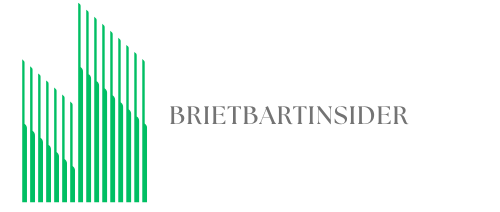Table of Contents
ToggleIn a world where chaos reigns supreme and to-do lists seem to multiply overnight, routine planning emerges as the unsung hero of productivity. Imagine waking up each day with a clear game plan, ready to tackle tasks like a ninja on a caffeine high. It’s not just about getting things done; it’s about reclaiming precious hours that would otherwise slip through the cracks like a sock in a dryer.
Routine planning isn’t just for the overly organized or those with color-coded calendars. It’s for anyone who wants to turn the daily grind into a well-oiled machine. By crafting a routine that works for them, individuals can transform their lives, boost their productivity, and maybe even find time for that elusive afternoon nap. So, buckle up and get ready to dive into the art of routine planning—where structure meets spontaneity, and every day feels like a victory lap.
Overview of Routine Planning
Routine planning enhances productivity by providing structure to daily activities. It enables individuals to prioritize tasks effectively while still allowing for flexibility. This approach benefits everyone, regardless of their organizational skills. An effective routine includes essential elements like time management, task delegation, and self-care practices.
Planning involves defining specific goals. These goals can range from work assignments to personal commitments. Individuals often outline their day in advance, which promotes efficient use of available hours. By allocating time slots for each task, distractions decrease significantly.
Incorporating breaks into a routine also proves beneficial. Short breaks offer rest, refreshing focus and preventing burnout. Engaging in enjoyable activities during these breaks encourages productivity. Moreover, a well-planned routine accommodates both work tasks and leisure activities equally.
Routine planning allows individuals to monitor progress regularly. Tracking task completion not only boosts motivation but also enhances accountability. Adjustments can be made as needed to ensure alignment with personal goals. This adaptability fosters a sustainable approach to maintaining routines long-term.
A balanced routine invites spontaneity while respecting commitments. Individuals often experience higher satisfaction when they can adjust their day. Effective routine planning combines structure and openness, creating a fulfilling daily experience. This art of planning transforms busy lives, making chaos more manageable and enjoyable.
Benefits of Routine Planning

Routine planning offers numerous advantages that significantly improve daily life. It promotes effective time management and boosts overall productivity, transforming how tasks are approached.
Improved Time Management
Effective time management results from having a structured routine. Individuals can allocate specific time slots for tasks, enhancing focus and minimizing wasted time. Prioritizing activities helps streamline efforts, ensuring that essential responsibilities get addressed first. People often find they accomplish more in less time, creating a sense of control over their schedules. Additionally, the clarity provided by a well-planned routine allows for easier identification of free time for personal pursuits or necessary breaks. This structured approach enhances the ability to balance work and personal commitments, making days feel less overwhelming.
Enhanced Productivity
Enhanced productivity stems from routine planning, as it creates a roadmap for daily efforts. A defined schedule encourages individuals to maintain momentum throughout the day. When tasks are prioritized, the risk of procrastination decreases, leading to more consistent progress. Incorporating short breaks into the routine also contributes to sustained energy levels, preventing burnout. Individuals often report increased motivation, driven by a visible record of accomplishments achieved throughout the day. By regularly monitoring progress, he or she can adjust plans to align with evolving goals. Overall, a structured routine cultivates an environment where productivity flourishes, making it easier to achieve personal and professional aspirations.
Strategies for Effective Routine Planning
Implementing effective routine planning requires specific strategies. These strategies enable individuals to streamline their processes and optimize productivity.
Setting Clear Goals
Establishing clear goals provides a strong foundation for effective routine planning. Goals should be specific, measurable, achievable, relevant, and time-bound (SMART). Individuals increase focus and motivation when their goals are clearly defined. By identifying both short-term and long-term objectives, achieving targets becomes more manageable. Regularly reviewing these goals reinforces the commitment to personal and professional growth. Aligning daily tasks with these goals helps ascertain that efforts are directed toward meaningful outcomes. Ultimately, clarity in goal-setting transforms vague aspirations into concrete steps.
Prioritizing Tasks
Prioritizing tasks ensures that critical responsibilities receive attention first. Utilizing techniques such as the Eisenhower Matrix aids in distinguishing between urgent and important tasks. Individuals gain clarity with this approach, which categorizes tasks into four segments. Addressing high-priority items fosters a sense of urgency while lesser priorities can be scheduled for later. Tackling top tasks in time slots enhances focus and decreases the chance of distractions. As a result, daily efforts are streamlined, allowing individuals to achieve more without feeling overwhelmed. Consistency in prioritization allows for adjustments, aligning with changing demands while maintaining productivity levels.
Tools and Resources for Routine Planning
Routine planning benefits from various tools and resources, enhancing productivity and time management. Individuals can choose between digital tools and traditional methods based on personal preferences.
Digital Tools
Digital tools provide convenience and efficiency for routine planning. Apps like Todoist and Trello enable users to create task lists and set deadlines easily. Calendar applications, such as Google Calendar, allow individuals to block out time for dedicated tasks, making scheduling straightforward. Pomodoro timers are also helpful, assisting users in maintaining focus during work sessions. Integrating these tools enhances productivity by streamlining task management and offering reminders to facilitate consistency.
Traditional Methods
Traditional methods offer alternative approaches to routine planning. Using planners and bullet journals lets individuals visualize their schedules and tasks on paper. Sticky notes can serve as reminders for priority tasks, keeping important responsibilities in sight. Some prefer printed calendars, which allow for quick reference to deadlines and appointments. These techniques foster engagement and creativity, while allowing flexibility in daily planning, effectively complementing structured routines that digital tools provide.
Common Challenges in Routine Planning
Routine planning presents challenges that can disrupt efficiency. Identifying these challenges helps individuals address them effectively.
Overcoming Procrastination
Procrastination often hinders progress in routine planning. Individuals frequently delay tasks despite knowing their importance. Structured routines reduce indecision by prioritizing tasks clearly. Setting strict deadlines enhances accountability, encouraging timely completion. Using techniques such as the Pomodoro Technique breaks work into manageable intervals. Maintaining focus during these intervals significantly decreases distractions. Regular self-assessment promotes awareness of procrastination patterns. Identifying triggers allows for targeted strategies to combat delays. Establishing a reward system for completing tasks can also motivate individuals to follow through on their plans.
Adjusting to Changes
Adjusting to changes represents a common challenge in routine planning. Life can introduce unexpected events that disrupt established routines. Remaining flexible with daily plans becomes essential during these times. Adapting priorities helps individuals realign tasks based on urgency and importance. Learning to modify schedules enhances resilience and promotes a sense of control. Transitioning to new routines may require time and exploration of effective methods. Incorporating short breaks amidst changes helps maintain focus and productivity. Regular reflection on progress encourages adjustments that align with ongoing goals.
Embracing routine planning can significantly enhance one’s productivity and overall satisfaction. By creating a structured yet flexible daily plan individuals can reclaim control over their time and focus on what truly matters. Integrating regular breaks and enjoyable activities into the routine not only prevents burnout but also boosts motivation.
With the right tools and techniques individuals can navigate life’s challenges with greater ease. The art of routine planning lies in balancing structure with spontaneity allowing for a more fulfilling and productive life. As individuals adopt these strategies they’ll likely find themselves more engaged and aligned with their personal and professional aspirations.








